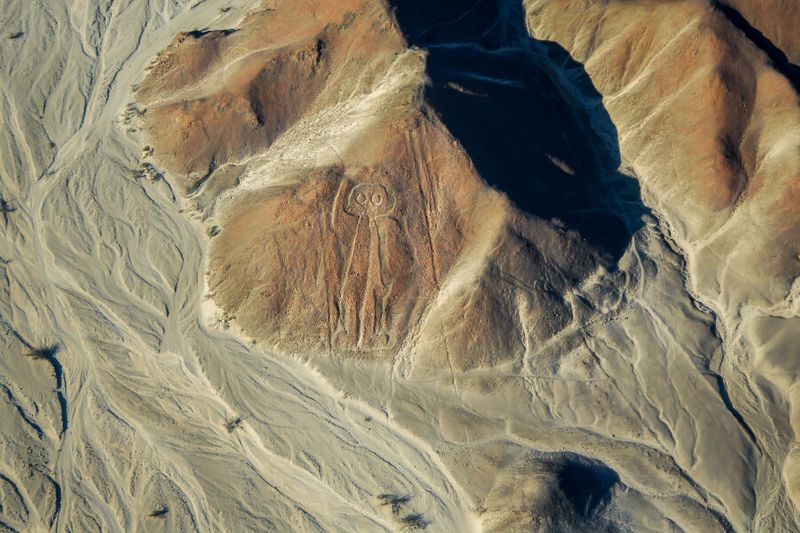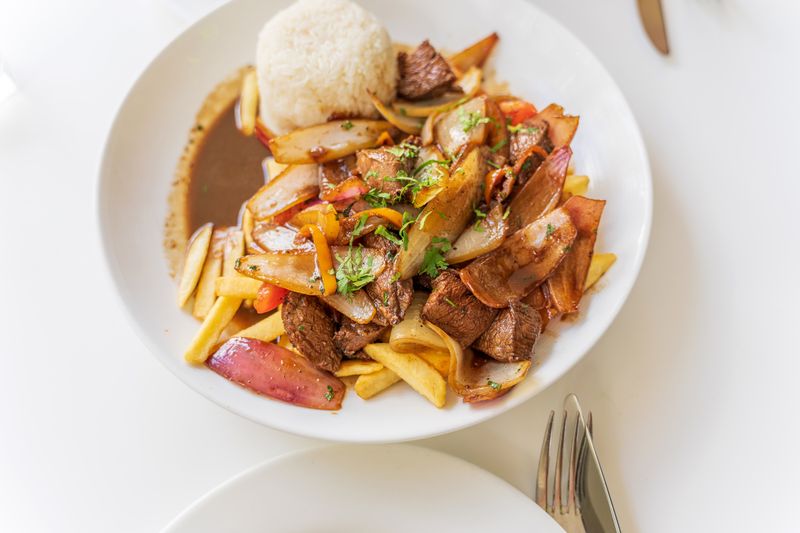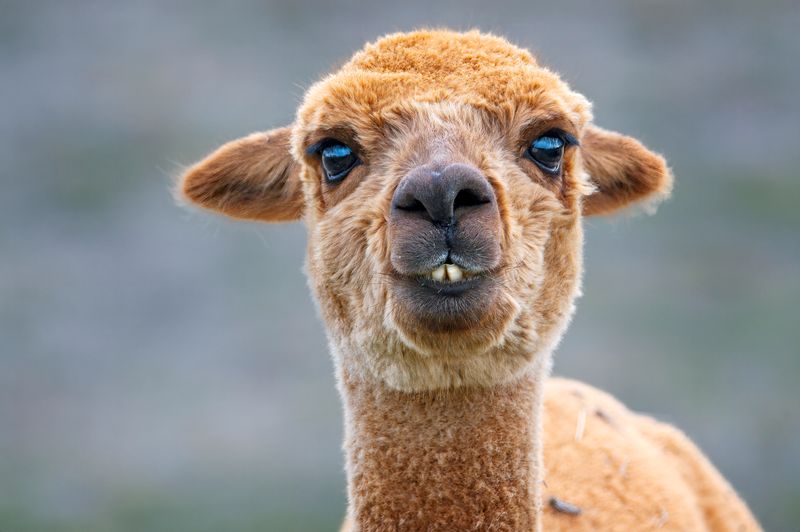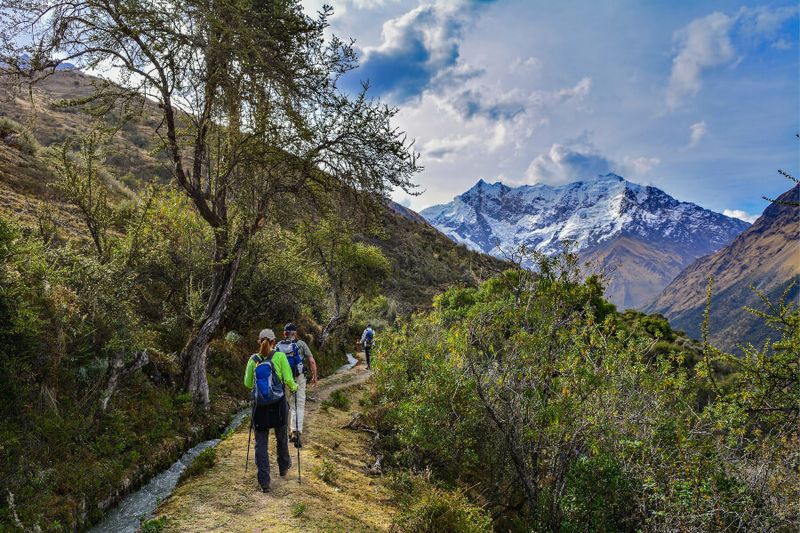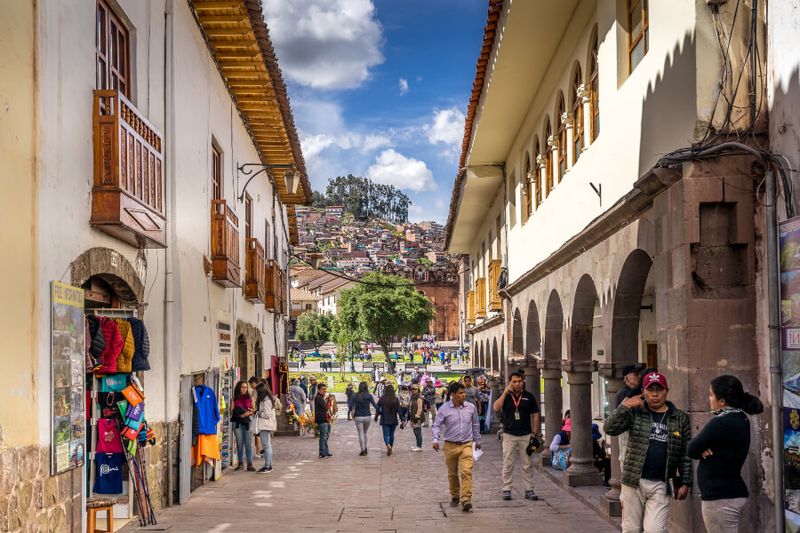There's something magical about that first glimpse of the Andes—jagged peaks piercing through clouds that seem close enough to touch. That's the allure of Peru. This South American gem has quietly climbed the ranks to become one of the continent's most compelling destinations. If you're planning your first trip to Peru, you're in for experiences that go well beyond the postcard shots of Machu Picchu.
This comprehensive Peru travel guide pulls together everything you need to know before your first visit. From the moment you land until the reluctant goodbye, Peru wraps you in experiences that stick with you long after returning home.
Uncovering Peru's ancient heritage
The earliest inhabitants of Peru walked these lands 13,000 years ago—a timeline that's difficult to comprehend. Yet everywhere you turn, evidence of this incredible history reveals itself.
The people who came before—from the lesser-known Chavín artisans to the empire-building Incas—weren't just surviving; they were innovating. Their textiles put modern fabrics to shame. Their pottery tells stories across millennia. And their architectural achievements? You simply have to see them to believe them.
Listen closely during your travels, and you might hear Quechua being spoken. This family of 46 languages existed long before the Incas rose to power and survived the Spanish conquest to remain an official language today.
Must-visit historical sites
Seeing everything in one trip isn't possible (though many try). When mapping out your Peru itinerary, these historical treasures deserve top place:
- Machu Picchu: Everyone recommends getting there early, and for good reason. This 15th-century Incan citadel sits 2,430 metres (7,970 feet) up, and the morning light hitting those ancient stones is worth every minute of lost sleep.
- Pisac: Just a winding 33-kilometre (20.5-mile) drive from Cusco, these terraced ruins often get overshadowed by their more famous cousin, Machu Picchu. The agricultural terraces, ceremonial baths, and valley views here will leave visitors speechless.
- Nazca Lines: Nothing quite prepares travellers for seeing these from above. Etched into the bone-dry earth of the Rio Grande de Nasca basin, these ancient geoglyphs make you question everything you thought you knew about ancient capabilities.
To experience the majesty of Machu Picchu, explore the colonial streets of Cusco, and immerse yourself in the traditions of the Sacred Valley, look to our longer journeys through South America. Both the 23-Day Inspiring South America with Santiago and the 27-Day Inspiring South America with Bolivia & Chile include guided time in Peru, blending world-famous highlights with local insight. These tours also take you deeper—through the Andes, along Lake Titicaca, and across multiple countries—for a richer, more connected way to explore the continent.
.
Did you know?
The Nazca Lines have barely changed in nearly 2,000 years. With almost no wind or rain to speak of, these massive drawings remain almost exactly as their creators left them between 500 BCE and 500 CE. It raises fascinating questions about what might survive from our own civilisation.
Exploring the Sacred Valley of Peru
"Sacred" feels like an understatement once you've visited the Sacred Valley of Peru. Stretching roughly 60 kilometres (37 miles) along the Urubamba River between Pisac and Ollantaytambo, the Sacred Valley wasn't just the breadbasket of the Incan Empire—it was its beating heart.
We recommend spending at least a day in Ollantaytambo. Walking those original streets with water still flowing through channels cut by Incan hands feels like time travel. The fortress walls, where massive stones fit together without mortar, are truly awe-inspiring.
Tantalising your taste buds
Food stands at the centre of Peruvian culture. This isn't just eating—it's a crash course in history, geography, and cultural exchange that happens to taste incredible. Peruvian cuisine represents the beautiful merger of indigenous ingredients with Spanish, Chinese, African, and Japanese culinary traditions, all simmered together for a few centuries.
Must-try Peruvian dishes
These Peruvian dishes hold top place in our Peru travel guide:
- Ceviche: Fresh, zingy, and utterly addictive. Raw fish "cooked" in lime juice, with just the right kick of chilli. Many visitors find themselves ordering it repeatedly throughout their stay.
- Lomo Saltado: The delicious result of Chinese stir-fry techniques meeting Peruvian flavours. Tender beef, tomatoes, peppers, and onions dance together in a soy-based sauce, then get piled over both rice AND chips.
- Causa: A cold potato cake with layers of seafood or chicken, avocado, and other goodies. Sounds unusual, tastes divine, and showcases Peru's remarkable potato diversity.
- Anticuchos: Grilled beef heart skewers that convert even the most offal-averse travellers. Served with boiled potatoes and corn, they're street food at its finest.
Adventurous eaters might try cuy (guinea pig), roasted or fried to a crisp. It's gamey, bony, and undeniably memorable. Plant-based travellers need not worry—those 4,000 potato varieties aren't just for show. Every market, restaurant, and street vendor offers creative vegetarian options that go well beyond the basics.
Did you know?
Peru has taken home the "South America's Leading Culinary Destination" title at the World Travel Awards for eight years running. Not even Argentina with its famous steaks could break Peru's winning streak.
Meeting Peru's furry ambassadors
No trip to Peru feels complete without a llama photobomb or an alpaca-themed souvenir (or several). These woolly camelids have been part of Andean life since before written records, valued for pretty much everything—meat, fur, transport, and now, perfect photo opportunities.
Peru is actually home to four camelid species:
- Llamas: The bigger, more independent ones with banana-shaped ears
- Alpacas: Smaller, fluffier, and more social, with straight ears
- Guanacos: The wild cousins primarily roaming Patagonia
- Vicuñas: The divas of the family, producing ultra-fine wool that once could only be worn by Incan royalty
Llamas and alpacas appear all over the highlands, especially around tourist sites. In Cusco and throughout the Sacred Valley, gorgeous alpaca textiles tempt shoppers at every turn. Check out our guide, 6 Souvenirs to buy in Peru, for more shopping ideas.
Discovering Peru's natural wonders
Saying Peru is diverse is somewhat of an understatement. Within a few days, you can go from experiencing the driest desert on Earth to the lushest rainforest, from the Pacific coast to peaks that scrape the sky.
Hiking adventures for every level
The beauty of Peru's varied geography is that there's a perfect trek for everyone, whether you're a seasoned mountaineer or someone who considers the walk to the corner shop adventure enough.
For the hardcore hikers:
- The Inca Trail: The classic 42-kilometre (26-mile) pilgrimage takes four days and arrives right at Machu Picchu's doorstep. Just remember—permits sell out faster than concert tickets, so book months ahead.
- Salkantay Trek: When Inca Trail permits sell out, this 74-kilometre (46-mile) alternative saves many travellers' plans. The 4,600-metre (15,090-foot) pass is challenging, but the transition from alpine terrain to cloud forest makes every step worthwhile.
For weekend warriors:
- Laguna 69 Trek: Despite its uninspired name, this day hike leads to a turquoise lake so vibrant it looks Photoshopped.
- Colca Canyon: The world's second deepest canyon offers multi-day adventures with nights spent in local villages where electricity remains optional.
For casual strollers:
- Huayna Picchu: This peak looming over Machu Picchu rewards a relatively short climb with the view that launches a thousand social media posts.
- Ruins around Cusco: Several archaeological sites near the city offer gentle walks that won't leave you gasping for oxygen.
Did you know?
The Inca Trail that tourists trek is actually just a tiny fragment of the Qhapaq Ñan—an Incan road system stretching over 30,000 kilometres (18,640 miles) across six modern countries. It was the ancient world's highway network, complete with rest stops, administrative centres, and military posts.
Important health considerations
Managing altitude
It’s easy to overlook how high some parts of Peru really are. While Lima rests at sea level, many of the country’s greatest attractions soar at lofty altitudes—Cusco, for example, sits an impressive 3,399 metres (11,152 feet) above sea level, and Peru’s average elevation is around 1,555 metres (5,102 feet).
Higher elevations can sometimes lead to altitude sickness (also known as acute mountain sickness, or AMS), even for the healthiest travellers. Symptoms may include headaches, fatigue, dizziness, or an upset stomach. In rare cases, a more serious condition called high altitude cerebral edema (HACE) can develop and require immediate medical attention. However, with a little preparation—such as gradual acclimatisation, staying hydrated, and recognising the early signs of AMS—you can confidently explore Peru’s breathtaking peaks and enjoy everything this remarkable destination has to offer.
Our top altitude survival tips for travelling Peru include:
- Take it slow—rushing up to high elevations is asking for trouble
- Water is your best friend—drink more than seems necessary
- Visit your doctor before your trip for prescription altitude meds
- Skip the celebratory pisco sour for the first 48 hours at altitude
- Allow time for extra rest upon arrival
Coca remedies
Throughout the Andes, coca leaves are the go-to remedy for altitude adjustment, used for thousands of years before modern medications arrived. Travelling this country, you will find coca tea, sweets, and even energy bars all over highland Peru. While these leaves are indeed related to cocaine, they contain only trace amounts of the alkaloid in their natural state and are perfectly legal in Peru and neighbouring countries.
Many travellers find that the earthy green tea becomes a morning ritual. Whether it's the slight stimulant effect or just the comfort of a warm drink, it seems to take the edge off the altitude adjustment.
Essential travel tips
When is the best time to visit Peru?
Peru essentially has two seasons, and the experience differs dramatically depending on timing:
- Dry season (May to October): This is high tourist season for good reason—clear skies, cooler temperatures, and ideal conditions for hiking and photography. The downside? Popular sites get crowded and prices climb.
- Wet season (November to April): Fewer tourists and gorgeously green landscapes come with the trade-off of regular rainfall, especially in January and February. Some hiking trails close during the wettest months, and cloud cover can obscure those postcard views.
Both seasons offer their own unique advantages—there's no wrong choice, just different experiences!
How to get around Peru
- Domestic flights: These are lifesavers for covering Peru's vast distances. Lima to Cusco takes just over an hour by air versus 22+ hours by bus.
- Buses: From no-frills to downright luxurious, buses connect virtually everywhere. The overnight "cama" (bed) service between major cities saves on accommodation while covering ground.
- Trains: The journey between Cusco and Machu Picchu isn't just transportation—it's an attraction in itself, with spectacular views through massive windows.
- Taxis and rideshares: Available in urban areas, but always nail down the price before setting off.
Essential Peru travel tips
Before you set foot on Peruvian soil, make sure you’re up to speed on everything from currency essentials and local language quirks to electricity requirements and tipping etiquette. A little know-how goes a long way in ensuring that your Peruvian adventure is as smooth as it is unforgettable.
- Currency: Nuevo Sol (PEN)—ATMs are plentiful in cities, but cash rules in rural areas
- Language: Spanish dominates, with Quechua and Aymara holding strong in Indigenous communities
- Electricity: 220V, with outlets accepting either Type A (two flat prongs) or Type C (two round prongs) plugs
- Tipping: A 10% gratuity is expected in restaurants and for guides who've shown you a good time
- Internet: Surprisingly good in cities and tourist spots, frustratingly absent in remote regions
Did you know?
Peruvians use both 12-hour and 24-hour time, sometimes in the same conversation. Train schedules and official documents use the 24-hour clock, while casual meetups get the familiar "let's meet at 8" treatment.
What to pack for a trip to Peru
Preparing for Peru's diverse environments requires strategic packing. From the coastal deserts to Andean highlands and Amazon rainforest, here's what experienced travellers consider essential:
- Layers, layers, layers—temperatures swing wildly
- Proper walking shoes that can handle cobblestones
- A rain jacket, regardless of season—mountain weather is fickle
- Sun protection (the equatorial sun is merciless)
- Altitude medication (your future self will thank you)
- Basic stomach remedies (changing bacteria is a real thing)
- Small bills—making change can be surprisingly challenging
- A universal power adapter (dual flat/round prong capability)
Summary: Top Peru travel tips for beginners
Before you choose your perfect Inspiring Vacations tour, here’s a round-up of our top Peru travel tips for beginners for an unforgettable Peruvian adventure:
- Best time to visit: May to October if you hate rain, November to April if you hate crowds
- Key destinations: Machu Picchu, Sacred Valley, Cusco, Lima, Lake Titicaca
- Must-try foods: Ceviche, lomo saltado, causa, anticuchos
- Health considerations: Respect the altitude, especially in Cusco
- Cultural highlights: Quechua traditions, textile arts, ancient ruins
- Wildlife encounters: Llamas, alpacas, and Amazonian critters
- Packing essentials: Layers, solid footwear, sun protection, medications
No Peru travel guide can fully capture the feeling of standing among the clouds at Machu Picchu or the taste of that first perfect ceviche in Lima.
We've been taking travellers through Peru for years, and still, each journey offers something new. Some days, it's the street food vendor who shares her grandmother's anticucho recipe; other times, it's stumbling upon a Peru cultural festival that wasn't in any guidebook. That's the beauty of Peru—it rewards those who come with curiosity and an open heart.
Take this Peru travel guide with you, but remember the best memories aren't found in itineraries but in those unexpected moments when Peru simply takes your breath away. When you're ready to turn these possibilities into plans, we're here to help create the adventure that's right for you.
Ready to experience Peru for yourself? For those seeking to explore beyond Peru into greater South America, consider our 23-day Inspiring South America with Santiago Small Group Tour or 27-day Inspiring South America with Bolivia & Chile Small Group Tour. Browse our complete collection of Peru tours and start planning your unforgettable Andean adventure today!
